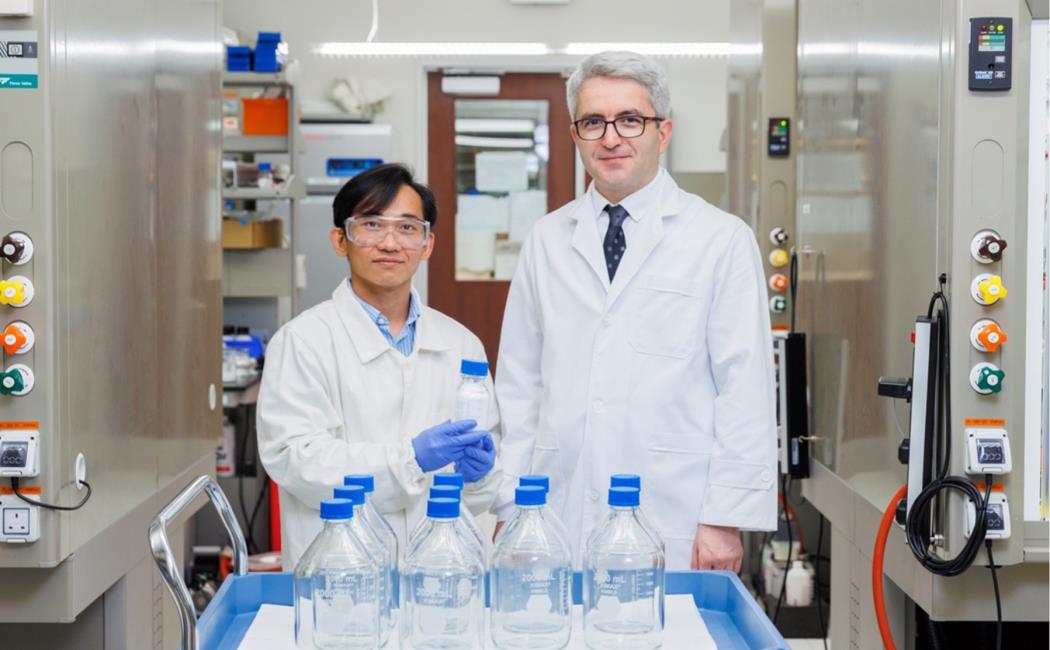
07 May, 2023
Dr. Thien Nguyen (left) and Professor Cafer T. Yavuz (right) pose with a bottle of CO2-loaded guanidinium sulfate salt (held by Dr. Nguyen). The ten gas-filled, two-liter bottles in front represent the required space for the same amount of carbon dioxide that would be needed were it not being held in clathrate form (small bottle). Photo: KAUST
A team of international researchers led by Professor Cafer T. Yavuz of King Abdullah University of Science and Technology (KAUST), Prof. Bo Liu from University of Science and Technology of China (USTC), and Prof. Qiang Xu of Southern University of Science and Technology (SUSTech) have developed a promising method for carbon capture and storage.
Methane hydrate is studied for its ability to capture and trap gas molecules such as carbon dioxide under high pressure. However, it is difficult to impossible to recreate these conditions in the lab, and the approach is additionally energy intensive, as the methane-ice solid requires refrigeration. Using a salt — guanidinium sulfate — the scientists have successfully created lattice-like structures called clathrates that effectively mimic the methane hydrate activity, trapping the CO2 molecules and resulting in an energy efficient way to contain the greenhouse gas.
“The guanidinium sulfateserves to organize and trap the CO2 molecules without reacting with them,” said Cafer Yavuz, professor of chemistry, and director of the KAUST Oxide and Organic Nanomaterials for Energy & Environment (ONE) Laboratory.“We have discovered a rare example of a clathrate that is stable and non-corrosive at ambient temperature and pressure, a highly desirable feature compared with ethanol amine, ammonia and other solutions that are commonly used in carbon capture.”
Read the full story at KAUST News.